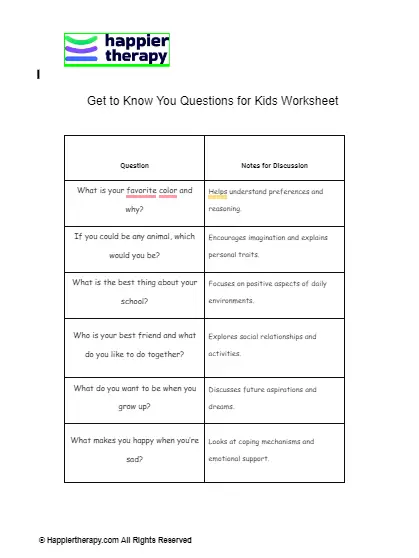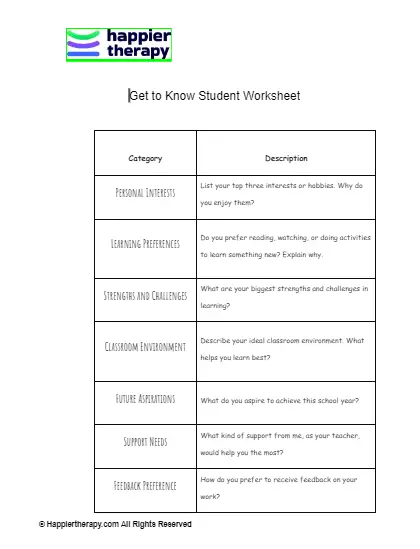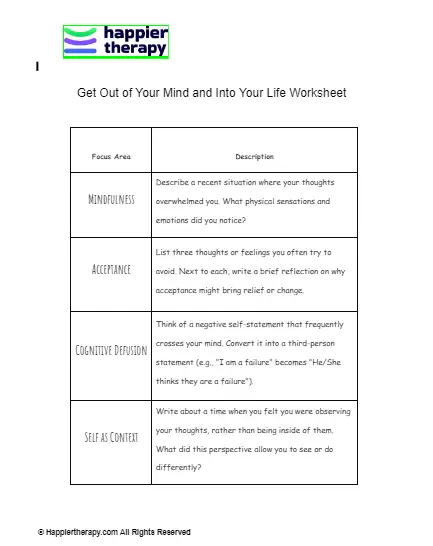Cognitive Distortions: Emotional Reasoning
Premium Content
Access this worksheet and 2,500 mental health worksheets. Cancel anytime
According to the American Psychological Association (APA), cognitive distortion can be defined as faulty or inaccurate thinking, perception or belief. (APA, © 2022) Often at times, cognitive distortions fuel our anxiety and increase our misery.
Unlock deeper healing — upgrade to Premium now!
Customizable and fillable worksheets
Rights to alter the worksheets
Over 2000 worksheets
Support HappierTherapy
There are a number of cognitive distortions identified in Cognitive Behavioral Therapy, the most common include:
- All-or-Nothing Thinking/ Polarized Thinking
- Overgeneralization
- Mental Filters
- Catastrophizing/ Magnification or Minimization
- Mind Reading/ Jumping to Conclusions
- Predicting the Future
- Emotional Reasoning
- “Shoulds” Statements
- Labelling
10. Personalization and Blame
This particular worksheet will focus on: EMOTIONAL REASONING.
What Are The Theories Behind This Worksheet?
Emotional Reasoning is one of the ten cognitive distortions that often happens to people who make judgements and decisions based on their current feelings/ or emotions. (Dr. Keelan, © 2022)
Emotional Reasoning can also be defined as inaccurately evaluating yourself and your surroundings, including those you interact with based on your present emotion. (Dr. Keelan, © 2022)
Cognitive schema is one factor that can be attributed to emotional reasoning. APA defines cognitive schema as an outlook or assumption that an individual has of themselves, others and their surroundings. (APA, © 2022)
People who result in emotional reasoning are usually battling with anxiety and this can include depression, panic disorder, post-traumatic stress disorder et al.
How Will This Emotional Reasoning Worksheet Help You?
This worksheet is targeted to help individuals break free from their distorted views of the world, situations, relationships and themselves.
This can be done by changing one’s negative/ or distorted thoughts and learning to take control of your automatic thinking patterns. The result will make you feel and function better, which will improve your quality of life.
How Should You Use This Worksheet?
Learn to make the best use of your time and schedule activities that bring you enjoyment and a sense of accomplishment.
Talk to someone and do not be afraid to express your emotions, thoughts and feelings.
This worksheet is a great start to your recovery journey; it will help you identify:
- I.C.E that is; Identify, Call and Explore your thoughts and feelings.
I – Identify the thought and feeling
C – Call out that thought or feeling
Example: “I know this isn’t going to work out well” = emotional reasoning
E – Explore the evidence that supports the thought and feeling and the evidence that contradicts the thought and feeling.
- Step away from your negative thoughts and feelings and introduce self-compassion as you strive to use logic and facts in your daily vocabulary.
Please answer the following questions as honestly as possible.
The questions asked will help you replace your negative/ or distorted thoughts and feelings and get out of emotional reasoning.
Was this helpful?
References
1.-
American Psychological Association. (© 2022). Cognitive Distortion. Available at:
https://dictionary.apa.org/cognitive-distortion. [Accessed October 05, 2022].
2.-
American Psychological Association. (© 2022). Cognitive Schema.
Available at: https://dictionary.apa.org/schema [Accessed October, 10, 2022]
3.-
Dr Patrick Keelan. (© 2022). Emotional Reasoning: A Cognitive Distortion with Powerful Effects.
Available at: https://drpatrickkeelan.com/anxiety/emotional-reasoning-a-cognitive-distortion-with-powerful-effects/. [Accessed October 10, 2022]

 By
By


